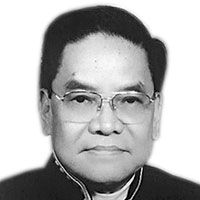Precision TACE improves response in advanced HCC

Chemoembolization with drug-eluting microspheres yields a higher response rate than does conventional chemoembolization in patients with more advanced hepatocellular carcinoma, based on the results of a phase II trial.
Transcatheter arterial chemoembolization (TACE) — typically performed by instilling an emulsion of doxorubicin and lipiodol and then occluding the vessel with gelatin sponge particles — is the standard of care for patients with intermediate-stage hepatocellular carcinoma (HCC), said at a meeting on gastrointestinal cancers sponsored by the American Society of Clinical Oncology.
“With this approach, [although] randomized trials show significant improvement over best supportive care, overall survival remains unsatisfactory, with 3-year survival of less than 30 percent in both European and Asian series.”
A new approach, called precision TACE, uses drug-eluting microspheres that release the drug in a controlled and sustained manner, an interventional radiologist at the Pisa University School of Medicine in Italy said.
Early-phase studies suggest that systemic exposure to doxorubicin is substantially less with precision TACE.
In the trial, patients from 23 European centers who had primary or recurrent intermediate-stage HCC with cirrhosis and who were not candidates for curative treatment were randomly assigned to conventional TACE with doxorubicin or to precision TACE with doxorubicin.
The patients underwent three chemoembolization treatments at 2-month intervals. Response was assessed by magnetic resonance imaging using European Association for the study of the Liver criteria. There were 102 patients in the precision TACE group and 110 patients in the conventional TACE group.
Most patients (87 percent) were male, and the median age was 67 years. The majority had Child Pugh class A disease (82 percent), an ECOG performance status score of 0 (75 percent), only unilobar involvement (55%), and primary disease (89 percent).
The 6-month overall rate of response (complete responses plus partial responses) did not differ significantly between the precision TACE and conventional TACE groups (52 percent versus 44 percent). The findings were similar in analyses restricted to patients with less advanced disease — a Child Pugh class of A, an ECOG performance status score of 0, unilobar involvement or primary disease.
However, among patients with more advanced disease, the response rate was significantly higher with the precision procedure (P = .04).
Specifically, precision TACE was superior to conventional TACE in patients with a Child Pugh class of B (44 percent vs. 21 percent), an ECOG performance status score of 1 (63 percent vs. 29 percent), bilobar involvement (49 percent vs. 40 percent), or recurrent disease (55 percent vs. 31 percent).
The rate of grade 3/4 adverse events that were probably or definitely related to treatment was 13 per 100 treatments in the precision TACE group, compared with 19 per 100 treatments in the conventional TACE group. The precision TACE patients had a lower combined rate of doxorubicin-related adverse events — alopecia, mucositis, marrow suppression, or skin discoloration — relative to their conventional TACE-treated counterparts (13 vs. 36 events per 100 patients, P = .0001).
The overall rate of serious adverse events probably or definitely related to treatment was similar, at six and seven events per 100 treatments, respectively. But the rate of hepatic serious adverse events was lower with precision TACE (three vs. nine events per 100 treatments).
In addition, elevations of aspartate aminotransferase and alanine aminotransferase after each treatment were less in the precision TACE group as well (P = .001 and P less than .0001).
There were eight deaths in each treatment group. One death in the precision group was due to progression, compared with three deaths in the conventional group.
Precision TACE appears to have better efficacy than conventional TACE in patients with HCC who are not candidates for curative treatment , especially those with more advanced disease: “Concerning safety, the [precision TACE] offers a significant advantage, particularly with regard to doxorubicin-related effects and overall liver-toxicity and liver treatment-related serious adverse events.
- Latest
- Trending

























